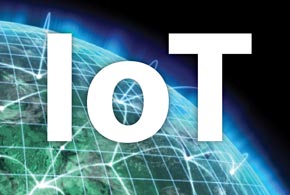As enterprises look for new ways to put data to work, it’s clear that no “thing” is being left unexplored. In fact, more than 50 billion connected devices will exist by 2020, according to Cisco Systems. The list includes everything from farm animals to automobiles, food tracing and tracking systems to jet engines.
“There’s a growing interest in understanding how to use the Internet of things (IoT) to better understand business, improve operations and launch new efficiencies that can be monetized,” says Joe Lamano, a principal at PwC consulting.
For IT organizations, managing connected devices—ranging from machine-to-machine (M2M) systems to consumer products and then building them into the framework of the enterprise—represents a major challenge. The IoT touches an array of digital technologies, including mobile and wireless, cloud computing and big data. It incorporates sensors, data transmission protocols, and increasingly complex software and systems. Tying everything together effectively and seamlessly is critical to mining and managing data—and generating meaningful results.
“There are enormous opportunities to make devices, machines and systems smarter by connecting them,” says Frank Gillett, vice president and principal at Forrester Research. “We are entering a new phase of business that allows organizations to understand things in a much deeper and broader way.”
Within this new order, there’s a need for different organizational thinking, along with entirely different IT systems that span functions, departments and organizations. It’s also critical to break down silos and dismantle Industrial Age thinking.
Already, the Internet of things is changing the way business and IT executives view assets, manage technology and systems, and handle transactions and interactions. It’s introducing new business possibilities and opportunities.
Today, “Almost any physical item or asset can be connected to the Internet of things,” PwC’s Lamano points out. “We are seeing a lot of businesses that aren’t traditional technology companies” embed sensors, Bluetooth, Near-Field Communication (NFC), WiFi and other technologies into products so they can stream data over the Internet.
Essentially, two basic types of connected objects exist: physical-first and digital-first. The former includes everyday objects—from clothing items to pallets used in shipping—that can be equipped with an RFID tag or other digital transmitter to track locations and provide other information. The latter incorporates native digital devices—such as smartphones and certain machines—that generate data and communicate with other systems.
Marrying these two categories is at the heart of an effective IoT deployment. Organizations that get it right suddenly gain visibility into the movement and behavior of objects, as well as the individuals using them.
Better Interactions With Customers
For example, retailer Marks & Spencer (M&S) has used RFID to track apparel and other merchandise through its supply chain since 2003. However, the company—which operates 766 stores in the United Kingdom and 418 stores internationally—is now expanding the initiative to tag all merchandise at an item level.
This generates data about inventory and purchase patterns, as well as providing customers with more information about products. For instance, when a customer purchases a product, such as bedding, M&S can suggest other items that may interest the shopper, such as sheets and pillowcases, and offer instant information about availability.
The company is working to interact with customers in an “omni-channel world that transcends traditional marketing boundaries,” says Kim Phillips, head of packaging for M&S. “If a single item is not available at the point of purchase, we can lose the sale. The person may go elsewhere to complete the purchase.”
The project has led to a 50 percent improvement in inventory accuracy and a more than 30 percent reduction in out-of-stock situations. RFID and the IoT have also helped create an IT infrastructure that’s better suited for new and emerging digital tools, Phillips points out. This includes kiosks that let customers place an item such as a shoe or a belt in front of a camera and instantly view complementary accessories, along with their availability.
At the heart of the effort: M&S’ IT organization has worked closely with company business leaders to understand technology requirements from both practical and technical standpoints. In order to support the IoT, the company has built an IT infrastructure that includes proprietary software, clouds, advanced databases and analytics.
“M&S has a long history of pioneering new technology,” Phillips explains. The use of RFID technology and the IoT “to replace manual methods of stock counting and stock checking is just a further aspect of the digital revolution that is changing many aspects of retail.”










